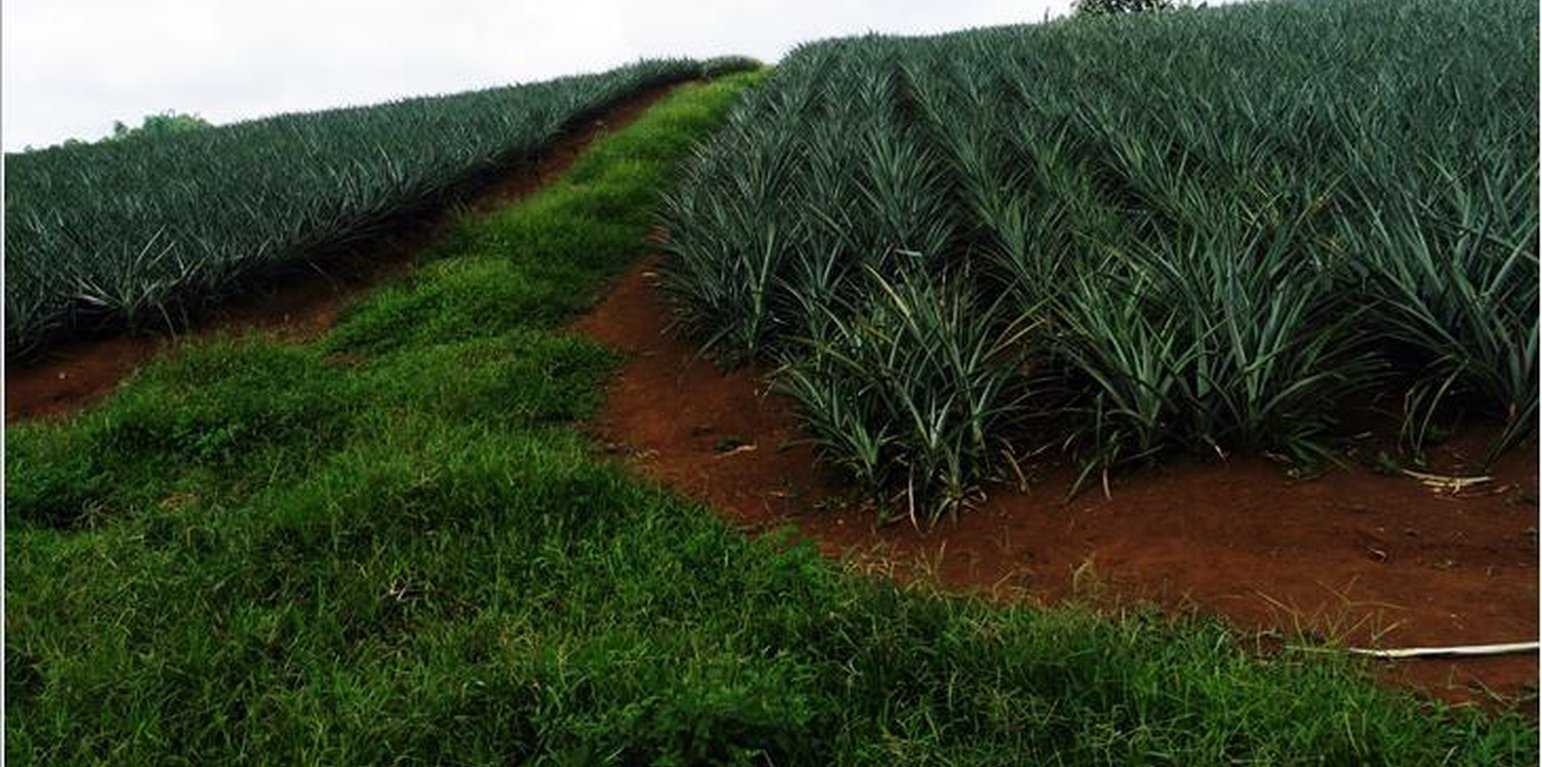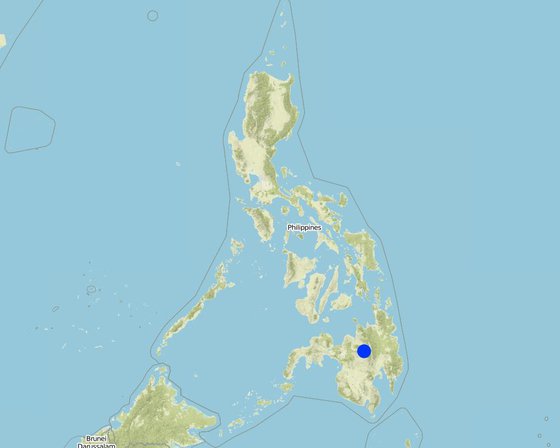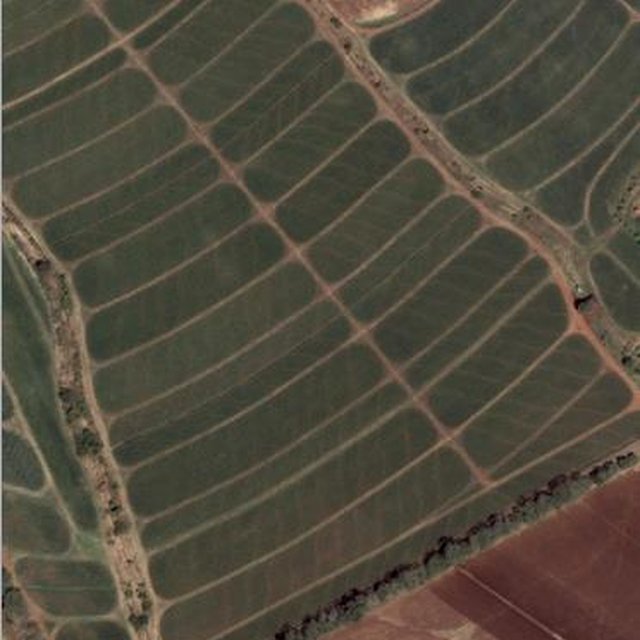



The main commodity used in the area is pineapple planted in each bed within blocks. Each block contains around 23-25 beds. Spaces between blocks with a dimension of 2-3 meters (width) served as vegetative strips where grass is being utilized and maintained. Grass as natural vegetative strips served as control for soil erosion by water. Vegetative strips are used as roads for accessibility purposes in times of planting and harvesting season. Pineapple production would last for 18-20 months for normal season and these requires massive land preparation. Plowing is done through a modified moldboard plow.
Purpose of the Technology: Pineapple were planted in beds within blocks, which is efficient and effective in water-induced soil erosion control.
Establishment / maintenance activities and inputs: Deep plowing,around one meter deep is a normal practice in the area. This practice would ensure proper root development of pineapple which is crucial for their growth; also it ensures re-introduction of pineapple trashes from the previous cropping as organic matter. Next activity is harrowing, which is usually done twice to pulverize the soil. Plastic mulching is a also a practice after bedding to suppress weeds and conserve water. Weeding is done manually. Foliar fertilizer spraying is done to induce flowering.
Natural / human environment: The area is under humid agro-climate condition with a topography ranging from 1-10% slope. It receives an annual average rainfall of approximately 3072 mm. The elevation ranges from 370-890 meter above sea level.
Mt. Kitanglad and Agri Development Corporation (MKADC) operates the area where the technology are being practiced. The technology has been introduced through experiments and adoption from neighboring farms. Farmers living within the area are the laborers of the company, they do all needed activities during preparation of the land, planting and harvesting.

Location: Valencia City, Bukidnon, Philippines
No. of Technology sites analysed:
Spread of the Technology: evenly spread over an area (approx. 1-10 km2)
Date of implementation: 10-50 years ago
Type of introduction




| Specify input | Unit | Quantity | Costs per Unit (Philippine peso) | Total costs per input (Philippine peso) | % of costs borne by land users |
| Labour | |||||
| Labourer | ha | 1.0 | 143.0 | 143.0 | 100.0 |
| Equipment | |||||
| Machine use | ha | 1.0 | 225.0 | 225.0 | 100.0 |
| Construction material | |||||
| Pineapple strings | ha | 217.0 | 100.0 | ||
| Total costs for establishment of the Technology | 368.0 | ||||
| Specify input | Unit | Quantity | Costs per Unit (Philippine peso) | Total costs per input (Philippine peso) | % of costs borne by land users |
| Labour | |||||
| Labourer | ha | 1.0 | 279.0 | 279.0 | 100.0 |
| Total costs for maintenance of the Technology | 279.0 | ||||
yes, greatly